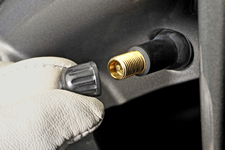 |
Everything you ever wanted to know about the humble tyre
|
Level 2 - Key Safety Checks Part 2 |
||||
Having explored the "Key Safety Checks Part 1" module in level 1 you will be familiar the basic changes that you yourself are able to make to your tyre to ensure they work at their optimum. In this section you will discover some of the more major tyre adjustments, so that next time you’re in the dealer or mechanic you are able to verify that they have done their “checks”. A BIG JOB FOR A SMALL AREA The part of your tyre that’s actually in contact with the road is only about the size of your hand. Your safety, comfort and fuel economy depends on that very small area. It’s important because your tyres:
Suspension alignmentA good time to get your suspension alignment checked is at a service. We would recommend if it hasn’t been checked recently, having it checked when you change tyres is a good investment, especially if your worn tyres have irregular wear. If the suspension alignment (tracking) on your vehicle is incorrect, then road holding may be affected and your safety could be at risk. It's not always possible to feel if your suspension alignment 'is out'. Normal wear and tear of suspension components can also see the alignment change over time. You may have hit a kerb or pothole, which could have put your suspension out of alignment without you noticing. It's a good idea to have a tyre specialist periodically check if any tracking adjustments are necessary.
Wheel Balancing
Valves
It could prove a false economy to compromise the life of your tyres, or even your personal safety, for the sake of the price of a new valve. Be sure to check carefully with your tyre dealer that they've replaced the valves when they change your tyres.
What’s next?Explore the next section to read more about safety on the roads and the impact tyres can have on the way your car performs in certain road conditions plus how your tyre pressures can affect your safety |
||||


